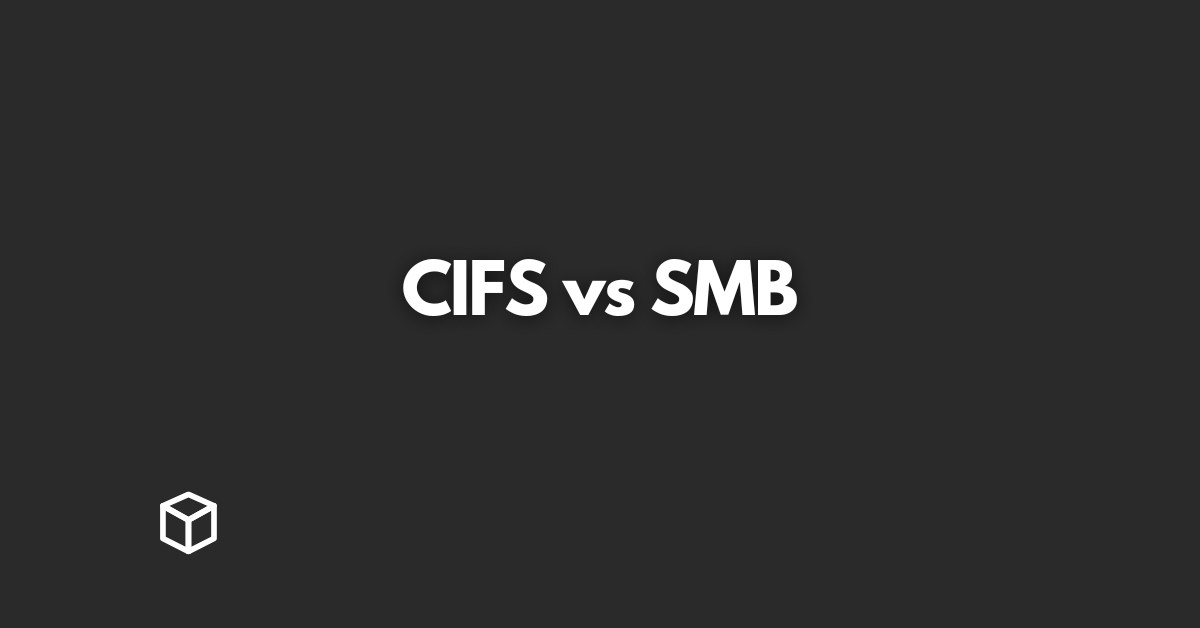File sharing protocols are an essential part of networking and data management.
They allow computers to share files, printers, and other resources over a network, making it possible for teams to collaborate and work together more efficiently.
Two of the most popular file sharing protocols are CIFS (Common Internet File System) and SMB (Server Message Block).
In this article, we will be discussing the differences between CIFS and SMB, and when to use each of them.
What is CIFS?
CIFS is a file sharing protocol that was developed by Microsoft in the late 1990s as an extension to the SMB protocol.
It allows for file and printer sharing over a variety of network types, including TCP/IP and NetBIOS.
CIFS is considered to be an older protocol, and it is not as widely used as it once was.
However, it is still supported by many operating systems and can be useful in certain situations.
One of the main features of CIFS is its support for file and printer sharing.
This allows users to access and share files and printers over a network, which can be especially useful in an office setting.
Further, CIFS is able to work over a variety of network types, which makes it more versatile than some other protocols.
CIFS also supports the NetBIOS naming service, which is a way to assign unique names to computers on a network.
This can be useful for identifying and connecting to specific computers.
However, it should be noted that CIFS does not support the DNS naming service, which is a newer and more widely used method of naming computers.
What is SMB?
SMB, or Server Message Block, is a file sharing protocol that was developed by IBM in the early 1980s.
It allows for file and printer sharing over a variety of network types, including TCP/IP and NetBIOS.
SMB has been widely adopted by many different operating systems and is considered to be a more modern and secure protocol than CIFS.
One of the main features of SMB is its support for file and printer sharing.
This allows users to access and share files and printers over a network, which can be especially useful in an office setting.
Furthermore, SMB is able to work over a variety of network types, which makes it more versatile than some other protocols.
SMB also supports both the NetBIOS and DNS naming services, which makes it more flexible than CIFS.
The DNS naming service is the newer and more widely used method of naming computers, and it allows for easier identification and connection to specific computers.
Differences between CIFS and SMB
There are several key differences between CIFS and SMB, including:
CIFS is an older protocol and is considered to be less secure than SMB
One of the main differences between CIFS and SMB is that CIFS is considered to be less secure than SMB.
This is due in part to the fact that CIFS is an older protocol and has not been updated as frequently as SMB.
Additionally, CIFS has been the target of several security vulnerabilities in the past.
While CIFS can still be used in certain situations, it is generally recommended to use SMB when possible.
CIFS is based on the SMB protocol and is not an independent protocol
Another difference between CIFS and SMB is that CIFS is based on the SMB protocol and is not an independent protocol.
This means that CIFS relies on SMB for many of its features and functions, and it is not as robust as a standalone protocol.
CIFS only supports the NetBIOS naming service, while SMB supports both NetBIOS and DNS
Further, CIFS only supports the NetBIOS naming service, while SMB supports both NetBIOS and DNS.
This means that SMB has more flexibility when it comes to naming computers on a network.
CIFS is less efficient than SMB for file transfers over WANs
Finally, CIFS is less efficient than SMB for file transfers over WANs.
This is because CIFS was designed for use on local networks and does not have the same level of optimization for wide area networks as SMB.
This can lead to slower file transfers and longer wait times for users.
When to Use CIFS vs SMB
When deciding whether to use CIFS or SMB, it’s essential to consider the specific requirements of your network.
In general, CIFS would be appropriate for older systems that do not support SMB, while SMB would be appropriate for newer systems that require improved security and performance.
For example, if you have a network with a mix of old and new computers, it may be more appropriate to use CIFS for the older computers and SMB for the newer ones.
This will ensure that all computers on the network are able to share files and resources, while also taking advantage of the improved security and performance provided by SMB.
Conclusion
In conclusion, CIFS and SMB are both file sharing protocols that have been widely used in the past.
However, SMB is considered to be more modern and secure than CIFS. When deciding which protocol to use, it’s essential to consider the specific requirements of your network.
If you have any further questions about CIFS and SMB, please leave a comment or contact us.
It is important to understand the key differences between CIFS and SMB and how to use them effectively for better network and data management.
Choosing the right protocol can help to improve the security and performance of your network and make collaboration and work more efficient.




